EDA Conversion Services: Fast & Reliable File Conversion Without Data Loss
- Posted On:
- June 3, 2025
- Category:
- Ecad
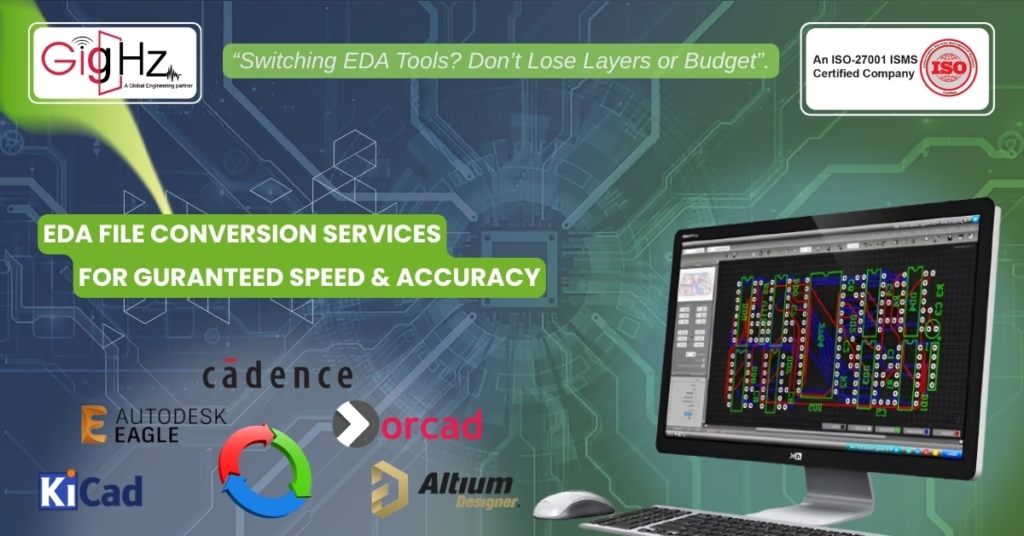
Evidently,
If you have ever switched design tools in the middle of an ongoing project, you know the stress.
As you hit Export, switch platforms, and then suddenly half of your layers go missing. Consequently, the netlist is corrupted and the constraints? Well, they are definitely gone as well!
Now, this is not just frustrating but super expensive as well.
So, whether you’re converting Altium to Eagle, tweaking KiCad or OrCAD, or juggling between ECAD to MCAD — expertise in EDA file conversion is key, especially when it’s all based on client requirements.
But don’t worry, there’s a reason I came up with this blog!
Now, allow me to walk you through some critical principles of EDA-PCB design conversion.
Plus, I will tell you why it’s such a big deal and how to fix it before it’s too late.
Why EDA File Conversion Is More Critical Than Ever
So, engineering teams are switching tools more often nowadays – in order to cut down costs on licensing fees, implement new workflows, or collaborate with teams using different platforms.
However, EDA tools don’t always get along that smoothly like others.
Yes, transitioning from Altium to Eagle or from KiCad to Allegro isn’t as simple as a copy-paste job.
Ofcourse, there’s a lot of complexity embedded in layers, libraries, netlists, and constraints. Now, this is where poor EDA software conversion solutions can really cause major problems.
Likewise, each and every file conversion carries its own set of risks. So, if you lose data during the transition, then you will definitely end up facing issues like:
- Re-routing entire layouts
- Broken constraints that affect functionality
- Delays in prototyping
- Unexpected manufacturing issues
And, that’s why reliable PCB schematic conversion and EDA design translation services are now essential, not just optional.
The Hidden Risks Behind Poor EDA Conversion
Now, you must know that you’re not just moving files here and there but rather transferring intelligence. As, each PCB file holds integra; metadata, constraints, libraries, design rules, and more.
So, here’s what can go wrong during your conversion:
- Libraries break: Components may show up blank or incorrect.
- Constraints vanish: Causing DRC failures or layout errors extensively.
- Layer assignments shift: Critical nets get reassigned or misrouted randomly.
- Netlists become corrupted: Breaking the logical flow of your design completely.
Speaking of which, let me share an incident! One of our clients tried to convert Altium to Eagle without running a netlist verification. As a result, there was a 2-day delay in testing and running short on buffer period. Subsequently, it could have been avoided with the right EDA design translation services.
How to Convert Files Quickly and Accurately
Now, coming to solve the problems we have! Here’s a few steps on how to convert your EDA files the right way — without data loss, delays, or any headaches.
Step 1: Use Native Export and Import Tools
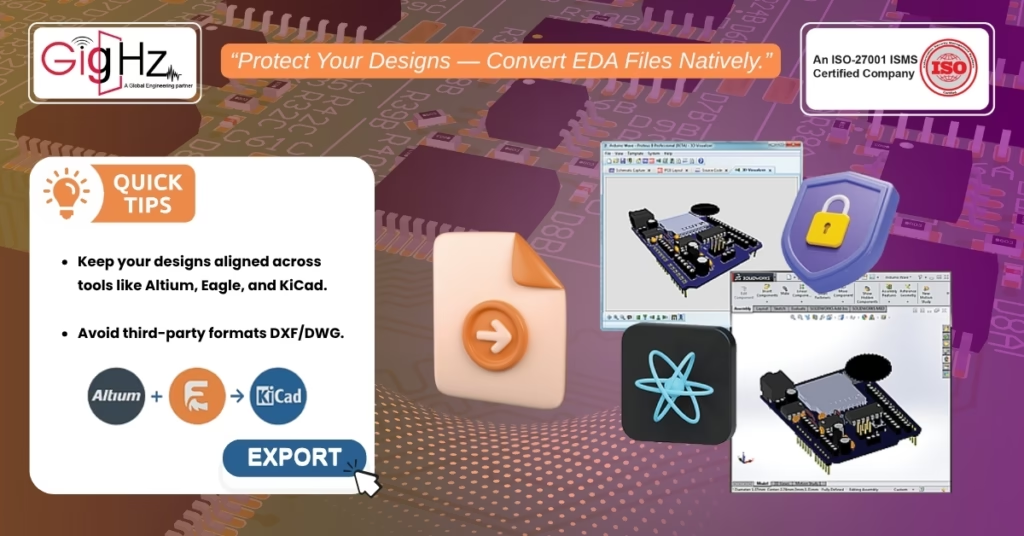
Firstly, when it comes to platforms like Altium, Eagle, and KiCad, it’s best to use their native export and import features whenever possible. Accordingly, these options do a much better job of keeping your metadata and structure intact compared to third-party formats.
Likewise, when converting files in Altium Designer, use built-in tools to avoid losing key constraints or net references.
Step 2: Leverage Trusted Conversion Services or Scripts
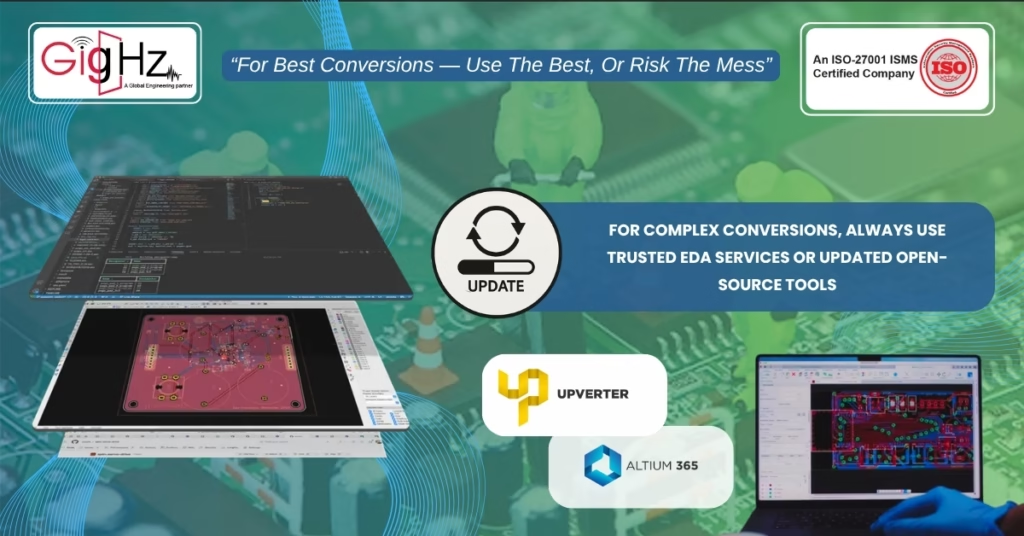
Secondly, for certain complex conversions, you must only rely on EDA conversion services or open-source tools that are regularly updated. Because, these are especially useful for multi-layer boards or high-speed designs where precision matters.
Step 3: Run Pre-Conversion Checks
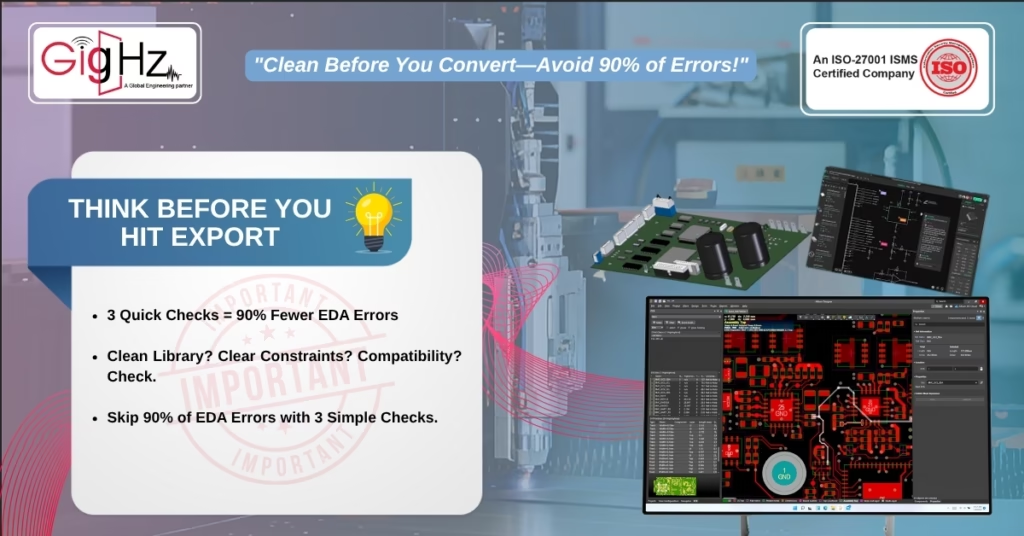
Thirdly, very important! Before you hit “export,” ask yourself:
- Is your component library fully developed and tidy?
- Have you clearly outlined all design constraints?
- Are you using compatible versions of the target tool?
As a result, you will see it yourself that these steps alone eliminate 90% of post-conversion errors.
Step 4: Validate Post-Conversion
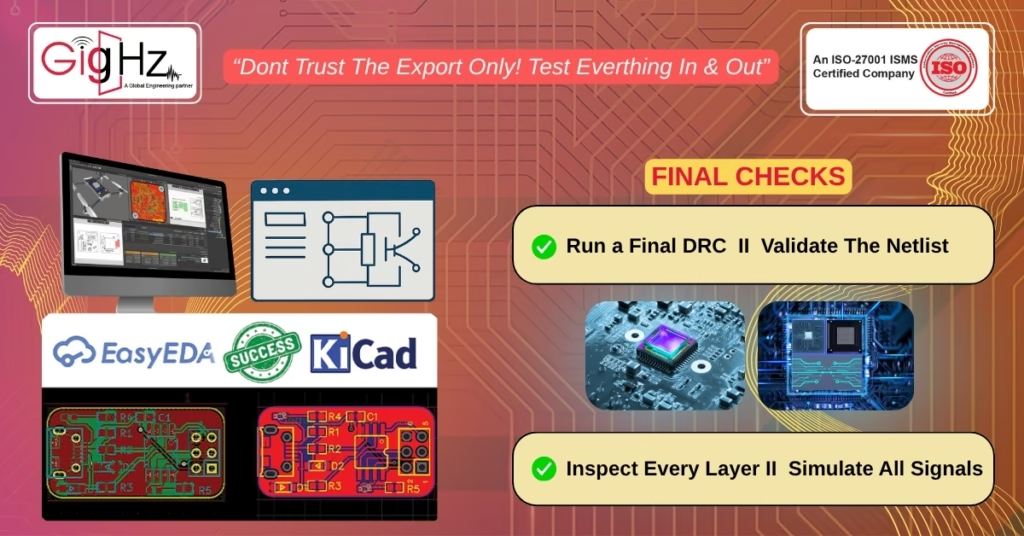
Most importantly, after you are done with your file conversion, don’t assume it’s perfect.
Immediately run a full design rule check, validate the netlist, inspect every layer, and simulate key signals.
And if you are outsourcing, keep in mind that any professional EDA tool interoperability or software conversion solution should include this. Because, this is where the true quality of your work becomes evident.
Bottom Line
Summing up, EDA conversion is not just about getting your files in some format or the other. Rather, it’s about getting your desired outcome for optimal performance of your designs. Otherwise, a single bad conversion can stop a production process, shoot up costs, and worst of all, cause faults in the hardware.
However, the good news is – The right EDA conversion service allows you to move between Altium, Eagle and KiCad safely free of any concerns. Whether it’s a schematic conversion, ECAD to MCAD conversion, or a complete Altium Designer conversion, the right approach saves you!
Need help navigating complex conversions?
Then, let’s have a conversation! Contact us at info@gighz.net.
Latest Post
Get Customized Engineering CAD Design Service

Book a Free Consultation Call
Partner with Gighz and bring your most innovative design concepts to life. Our engineering cad services accelerate development so you can focus on your big vision.
